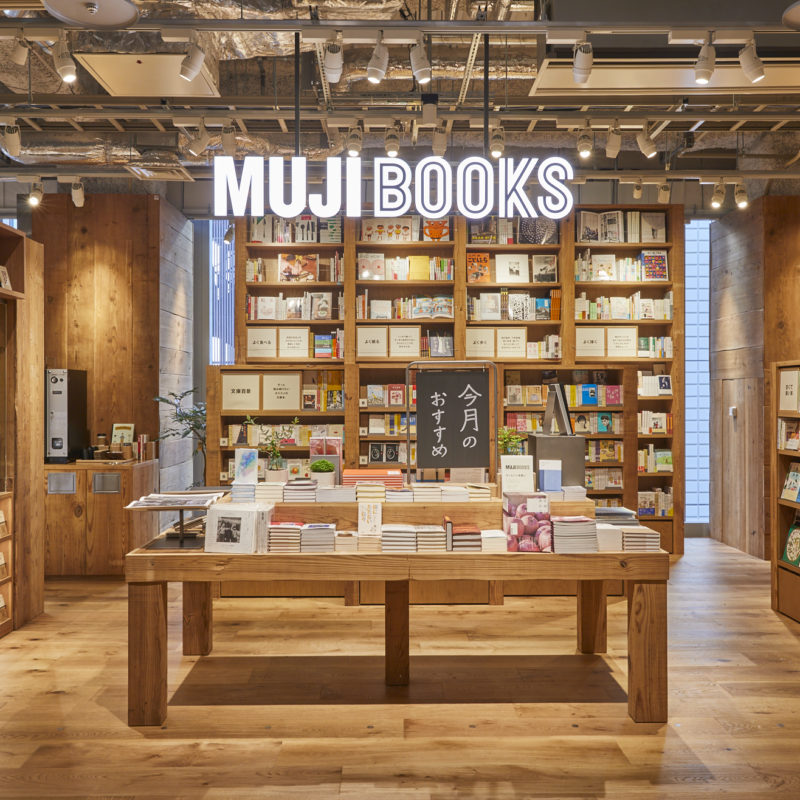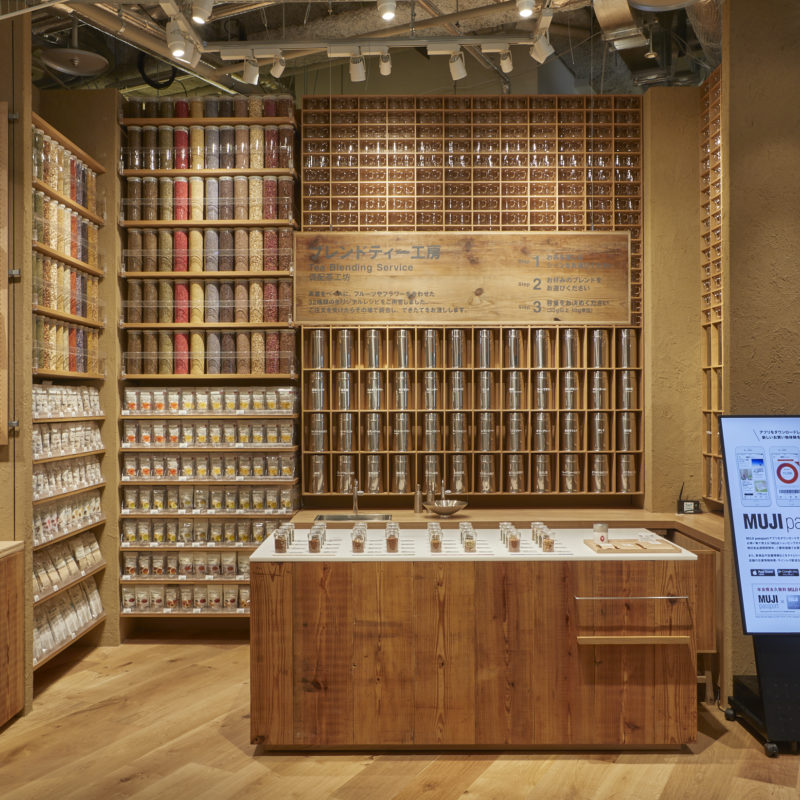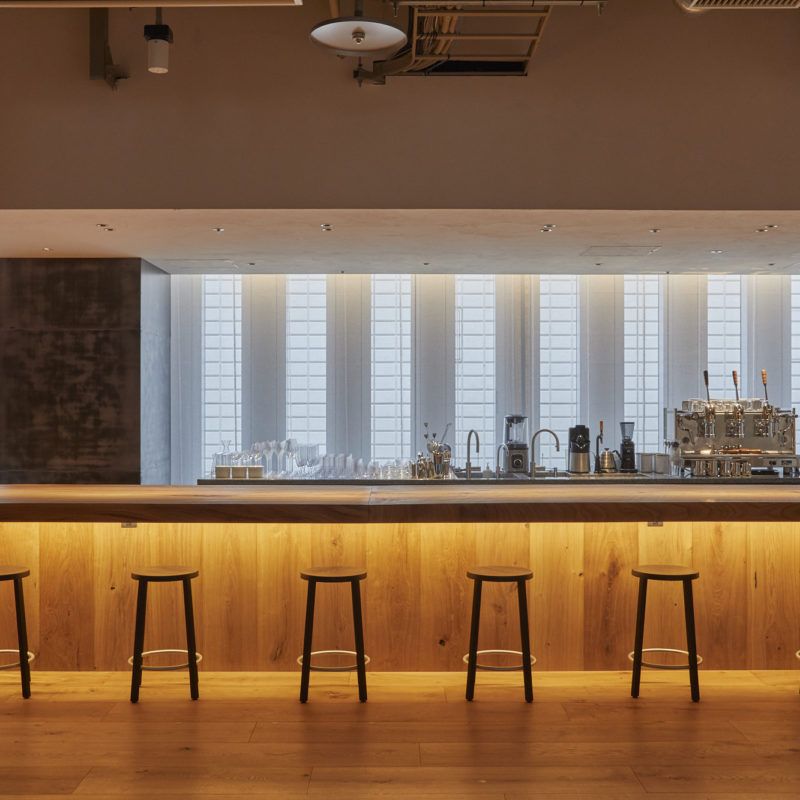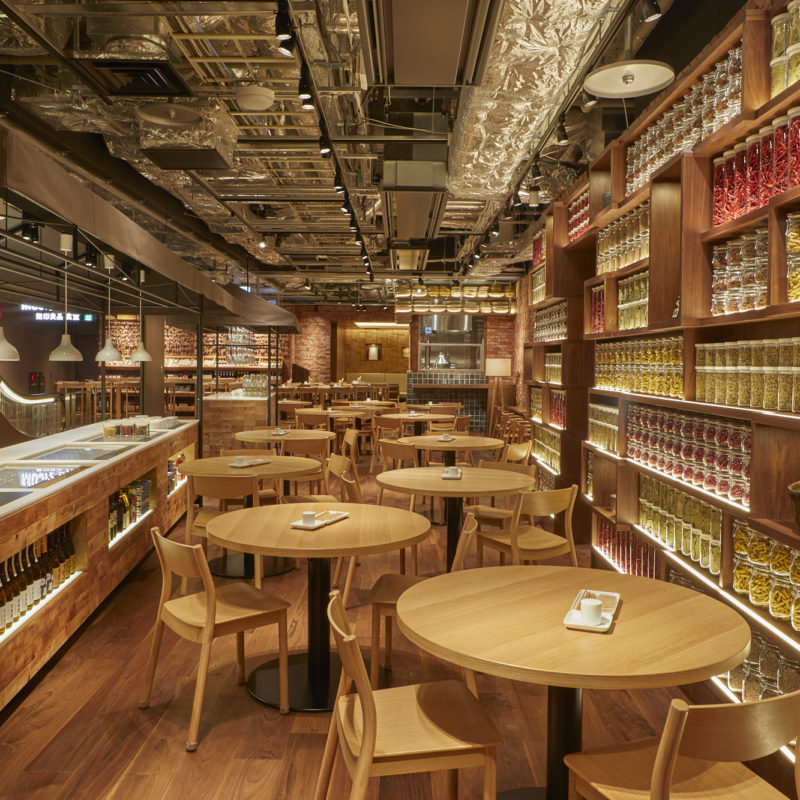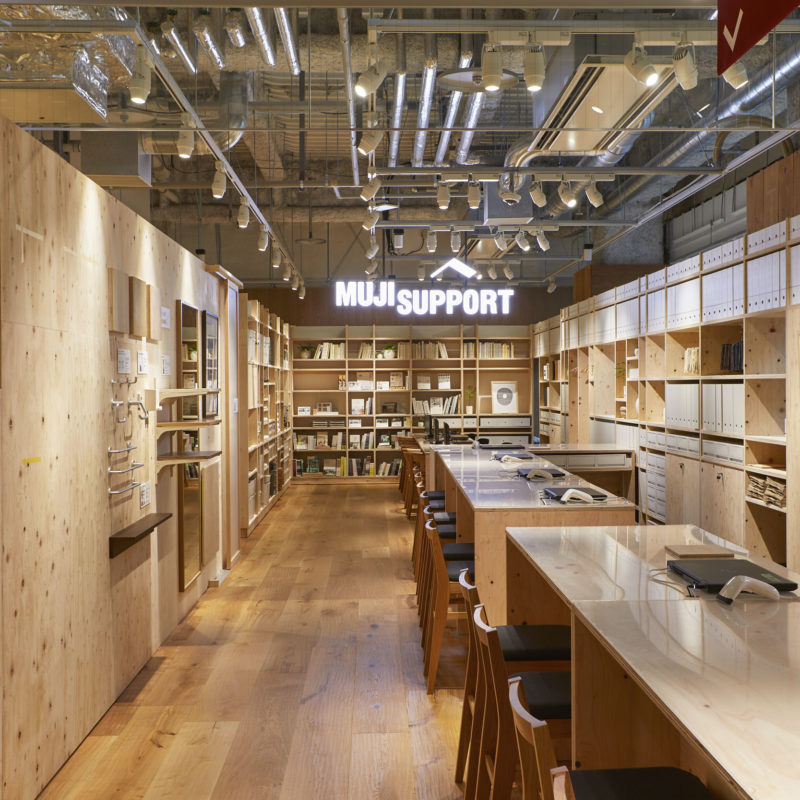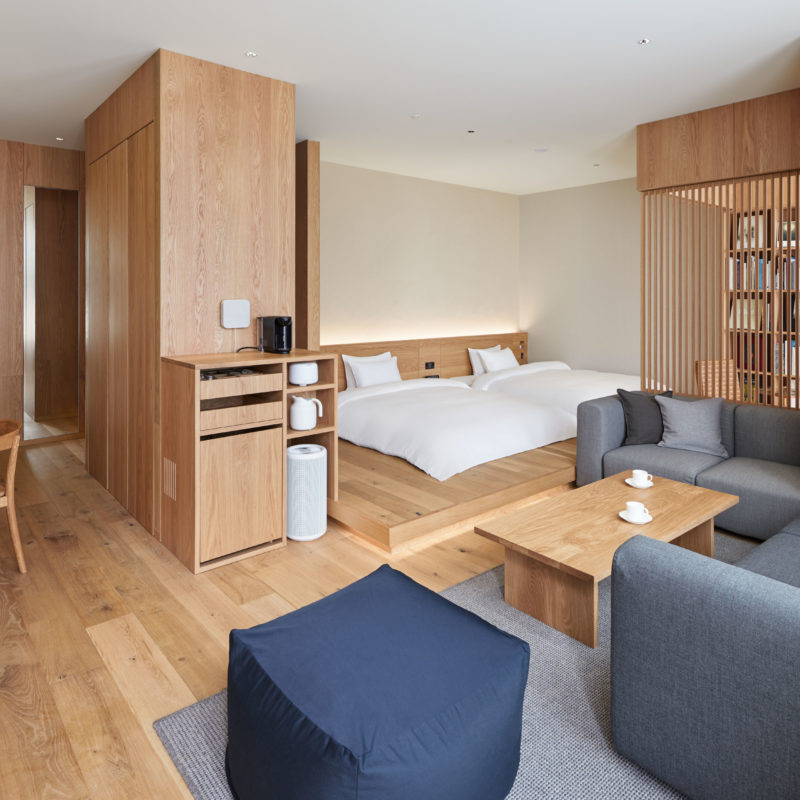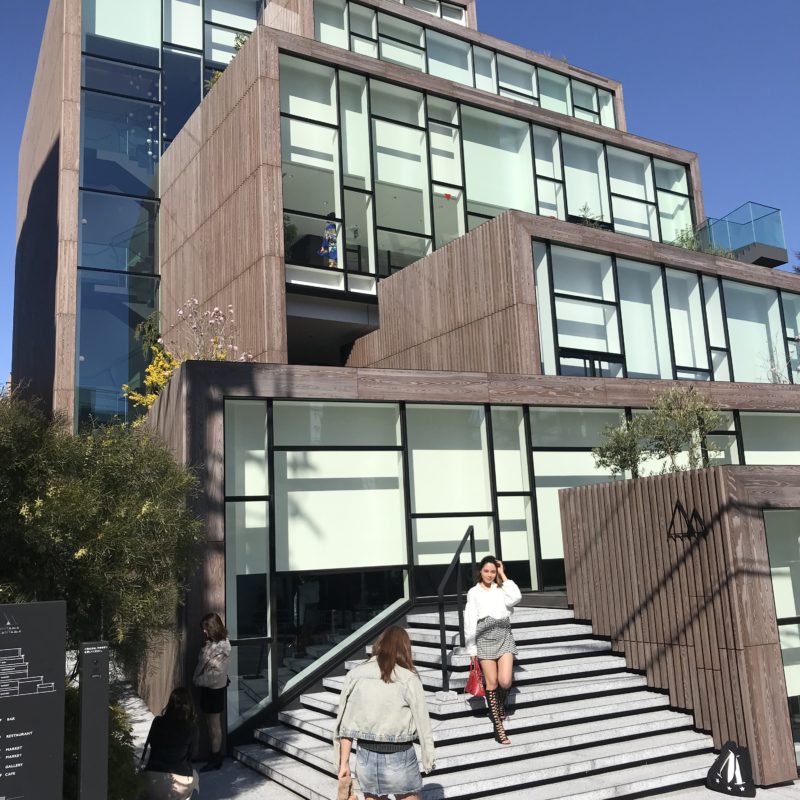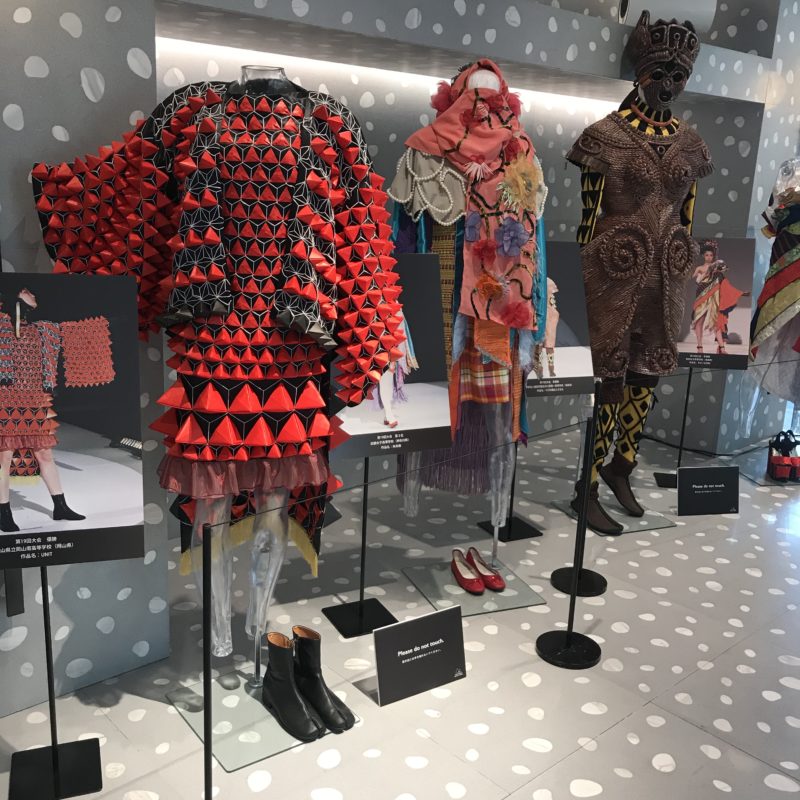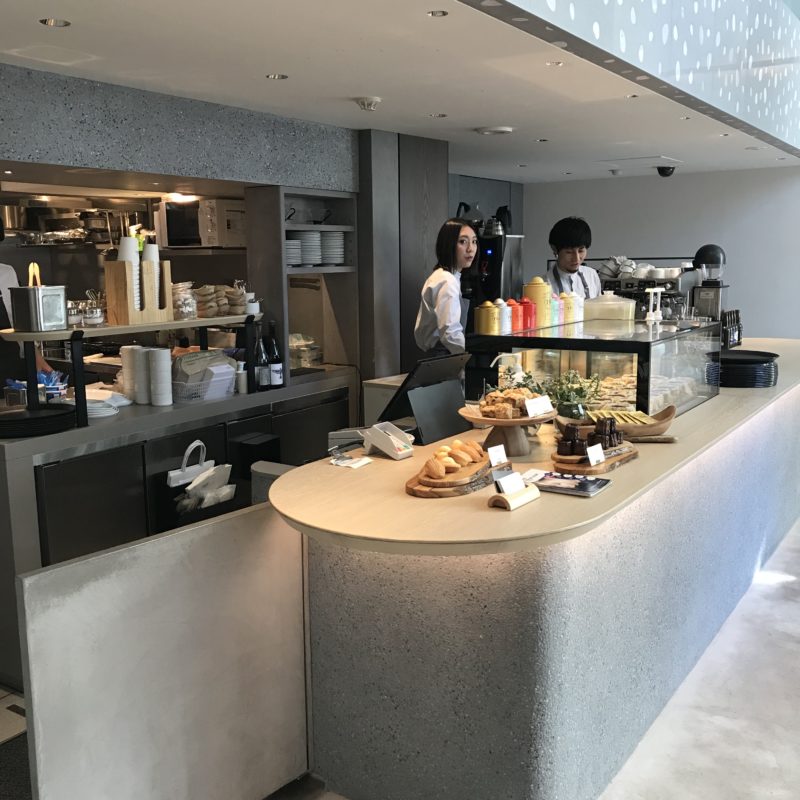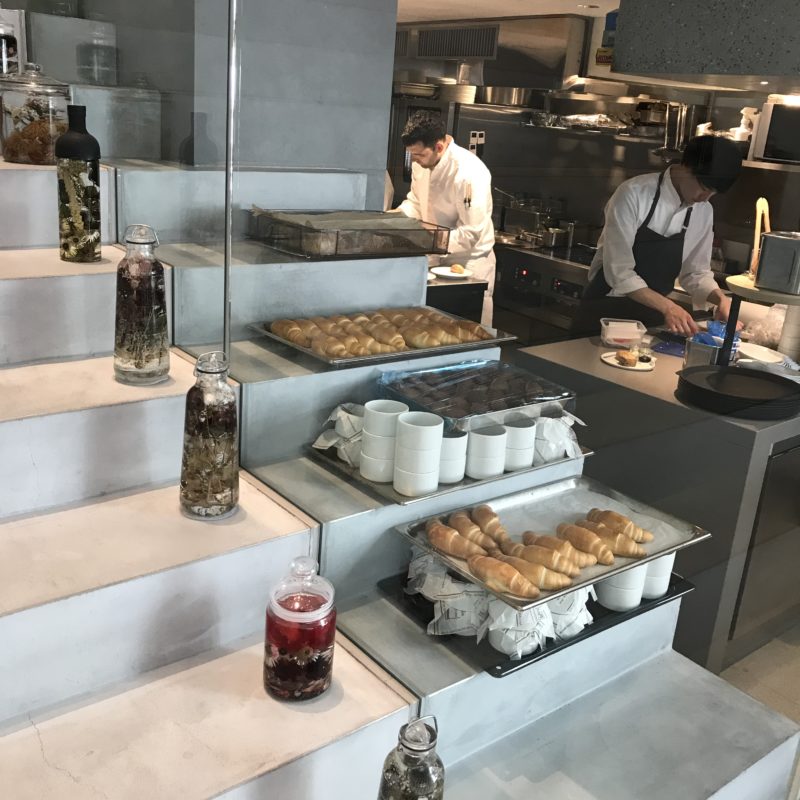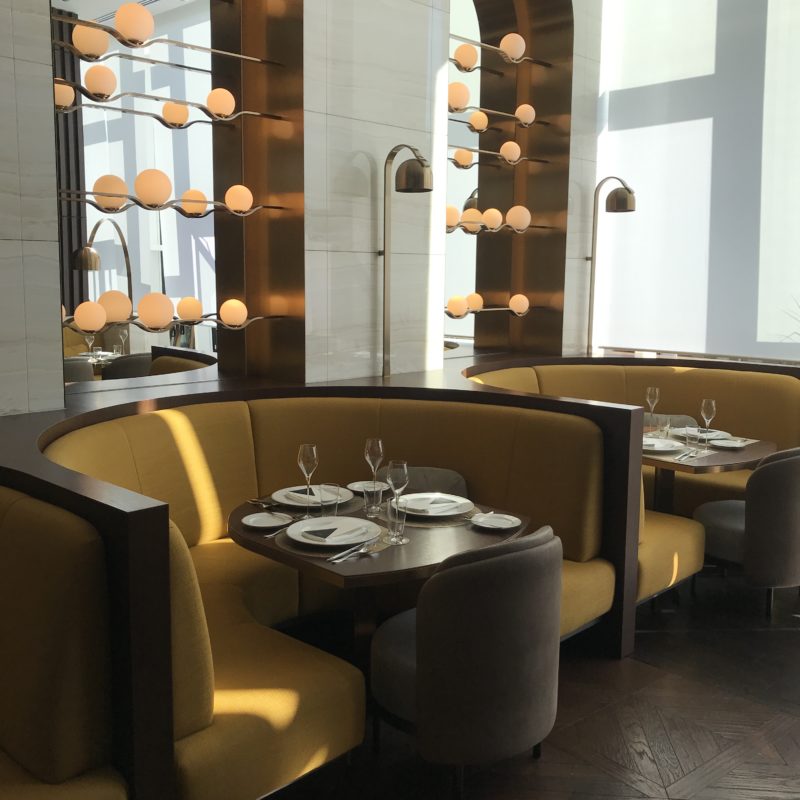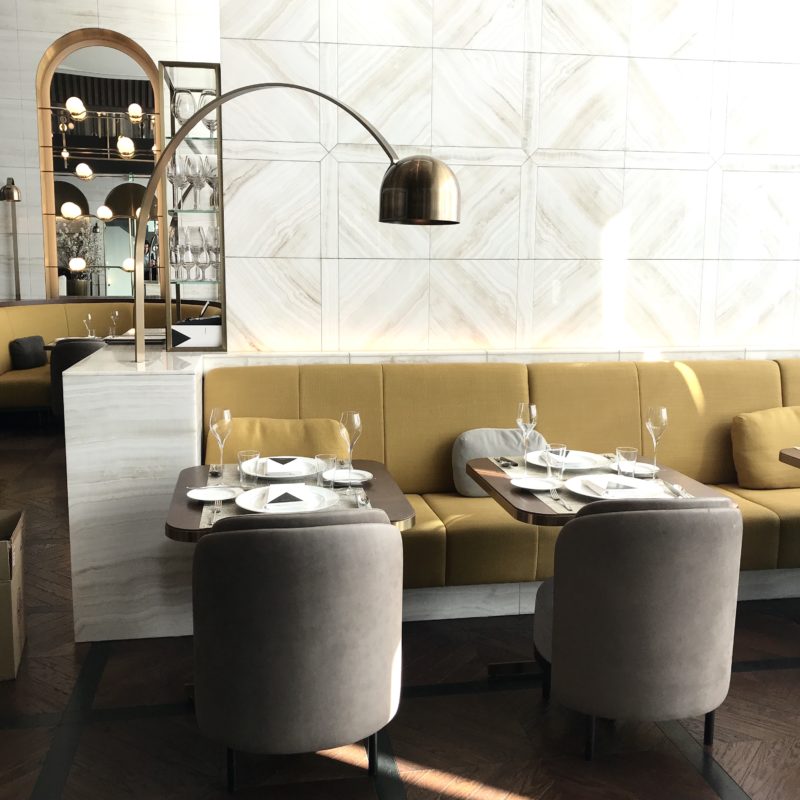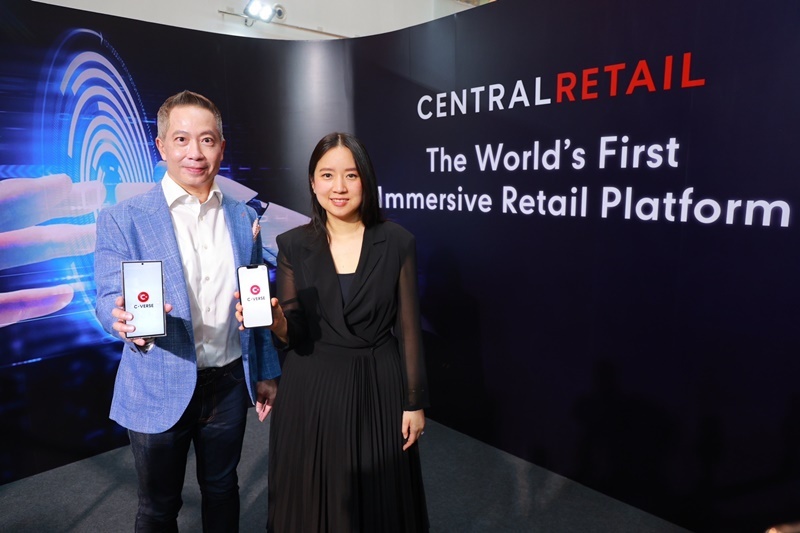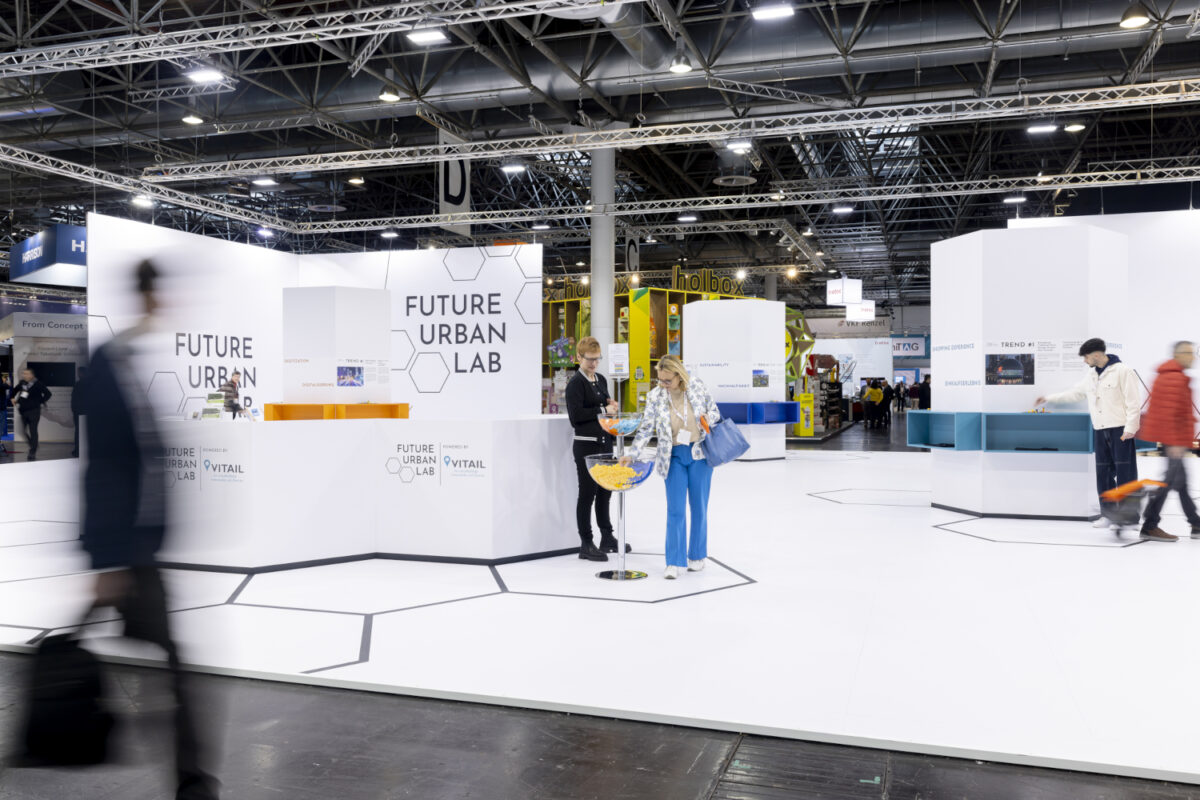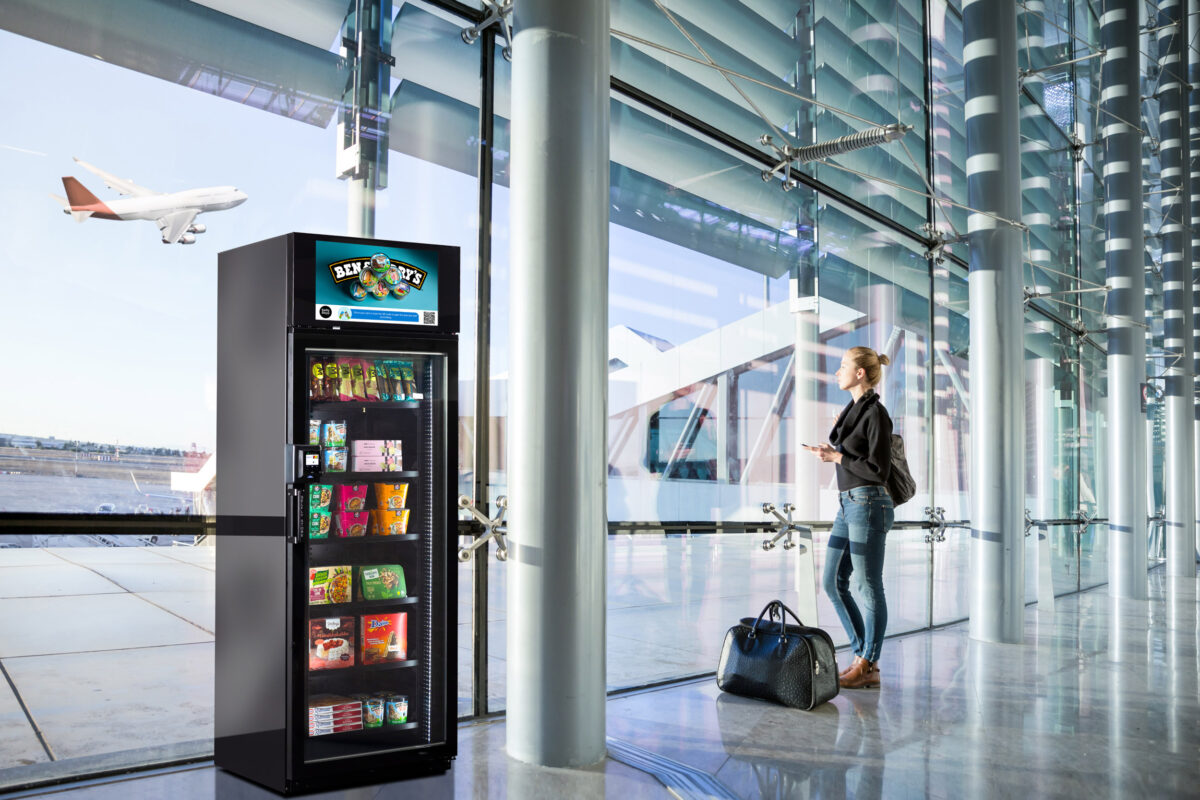Retail in Tokyo is over the top
by Illona Marx (exclusively for EuroShop.mag)
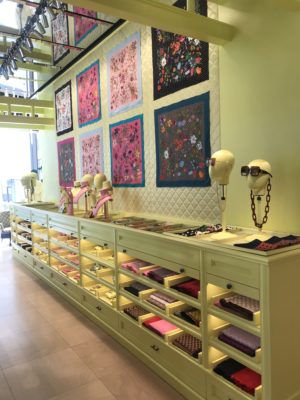
© Illona Marx
The most progressive store décor, the most inventive displays, the most courteous service, the most exquisite products, the largest selection, the most elaborate packaging: Until you’ve seen Tokyo, you don’t yet know what the most seductive form of contemporary shopping has to offer. The very well-known commercial district around Shibuya Station and the much-frequented street crossing of the same name are just the beginning of the many popular neighbourhoods: Omotesando and Aoyama are known for their high-end fashion flagship stores, while the equally exclusive Ginza is characterised by impressive luxury malls. As Tokyo’s Brooklyn, the Daikanyama district is making a name for itself: Here, small shop concepts operated by local and international brands are popping up out of the ground, sprawling bookstores stand side-by-side with hip cafés and attention-getting dog hairdressers.
Experiencing this diverse and abundant shopping world calls for orientation. From food & concept, brand, malls, shopping complexes to high fashion or architecture – in the following weeks we will introduce you to the shopping secrets of the Japanese Tiger City by successively presenting the top five locations from each of these categories. Here is an initial selection of five highlights. With these we would like to offer you a virtual tour of discovery through the most exciting streets of Tokyo – even during travel restrictions.
Food & Concept: In this category, we present stores that cleverly combine fashion, interior design or books with culinary delights.
Muji Ginza
Muji has existed since 1980. This temple of consumerism is characterized by simplicity and could be called a top-class general store, and yet all products are quite affordable. Muji sells Japanese lifestyle in any form: clothing, footwear, stationery, kitchenware and home accessories. In the flagship store in Ginza, which opened in 2019, a food market, restaurant, bar, gallery and hotel are also part of the concept. Of course, the concept is consistently well thought-out and just as straightforward as the worldwide Muji branches with their well-known departments and products. In the always busy food market on the ground floor of Muji Ginza, nuts, spices, cookies, teas, but also fresh fruit and vegetables are piled up. The full, metre-high shelves convey generosity and variety, the air is filled with smell of fresh croissants that come straight from the in-house oven to the counter of the integrated bakery. All snacks are packed in white or transparent bags in the Muji style and look like attractive little gifts.
Kenya Hara, one of Japan’s most renowned designers, is the creator of this minimalist design concept. A children’s playground, crochet classes, reading niches, the restaurant in the basement and even a gallery. A whole day can be spent playing at Muji. If you then add an overnight stay in the Muji Hotel on the top two of the seven floors, you are immersed completely in the Japanese way of life.
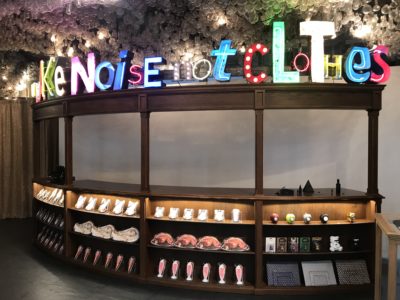
© Ilona Marx
3 Chome-3-5 Ginza, Chuo-ku, Tokyo
Brand: The proverbial attention to detail of Japanese designers is also reflected in the store design of their flagships.
Undercover Flagship
Jun Takahashi, founder of the label Undercover, is considered one of Japan’s most important designers. His brand stands for sportswear with high fashion appeal, he combines androgynous Japanese layering looks with punk influences. The interior of the Undercover flagship store in the Aoyama district is as eclectic as the look of the collections.
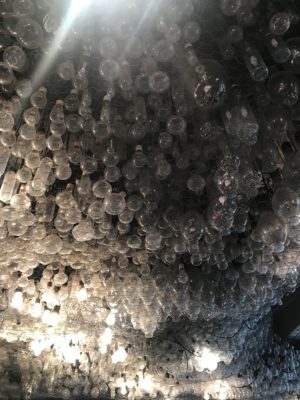
© Illona Marx
A sky of light bulbs illuminates the scenery on the ground floor, where the Undercover womenswear is offered. In contrast to this, a wood-panelled counter has been inserted into the store, above which in apparently jumbled letters of a neon sign the rebellious statement reminiscent of Jun Takahashi’s time as a punk singer: “We make noise not clothes.”
The inspiration for the counter clearly comes from his mentor Rei Kawakubo, the founder of the label Comme des Garçons. In her London cult retail store, Dover Street Market, the “checkout counters”, which are presented as DIY woodsheds, have already achieved fame.

© Illona Marx
A wide staircase leads to the basement of the store, which is home to the men’s collection. Non-colours dominate here: Light grey concrete pillars and steel displays in anthracite exude a cool, industrial charm, while large black & white portraits on the walls give the room a personal touch.
B1F BLEU CINQ POINT A, 5-3-22 Minami-Aoyama, Minato-ku, Tokyo
Malls & shopping complexes: Asian shoppers love to find everything under one roof. Temples of consumerism are highlights.
Kashiyama Daikanyama
The Daikanyama shopping district, which is part of Shibuya and adjoins the area around its large train station to the south, is extremely popular with Tokyo’s fashionistas thanks to refreshing store concepts operated by local and international brands.
Here you’ll find products in the mid-price segment, with an emphasis on individuality instead of luxury. And of course, there is a “place to be” in such an area. In this case it is called Kashiyama Daikanyama and is a flagship that the Japanese brand Onward built. The Nendo design studio had the task of transforming the fashion label’s broad spectrum of activities, specifically its well-known cultural and sporting commitments, into a physically tangible place. And the mission was accomplished: The store complex with its light-flooded cubes stacked on top of each other quickly became a meeting place.
The café in the basement in particular is a magnet. This is also where the lounge, which can be used for events, and a gallery are located. Corridors and staircases lead through the nested building to the sales rooms on the second and third floors, where Onward fashion and furnishings are offered. Herringbone-Terrazzo, cement floors with a textile look, marble and glass printed with marble patterns, stone tiles and wood – the materials alternate on the individual floors and give each floor its own look & feel. The fourth floor is especially exquisite and is home to the French restaurant Coteau, a branch of the Tokyo fine-dining address Sugalabo. Finally, from the bar on the fifth floor, guests enjoy the view of the district and the city. There is hardly a better way to transfer the image of a brand into a shopping experience.
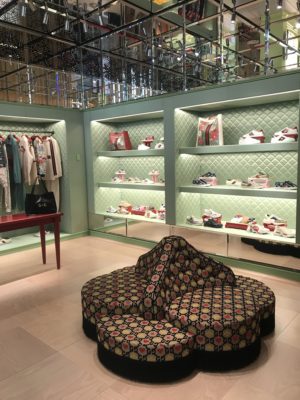
© Illona Marx
14-18 Daikanyamacho, Shibuya-ku, Tokyo
High Fashion:
How the high society of international fashion presents itself in the shopping capital.
Gucci, Parco
European high fashion can be found in several districts of Tokyo. But some shop-fitting concepts stand out from the majority of luxury addresses. One of them is the Gucci store located in the Parco shopping complex, which was reopened after renovation at the end of 2019.

© Illona Marx
The store has an almost unique character. Here, in the heart of Shibuya, Gucci has implemented a locally inspired and individualised concept that can be seen in only one other place in the world, in Gucci’s New York store in Soho.
On New York’s Wooster Street, brick walls and a more casual product presentation are designed to appeal to a younger clientele, whereas Tokyo’s store is a take on stylistic elements of Japanese culture. The changing rooms, for example, are embellished with watercolour paintings of Manchurian cranes, the Japanese national bird, and flowering cherry twigs, while traditional handwoven basket displays are used to display Gucci pumps.
15-1 Utagawa-cho, Shibuya-ku Shibuya PARCO, Tokyo
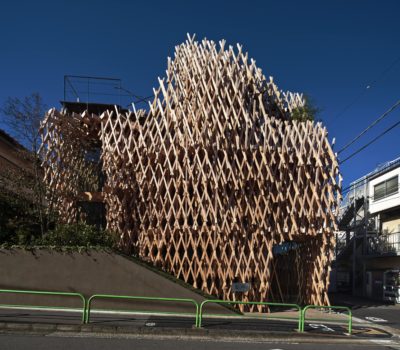
©DAICI ANO
Architecture: Herzog & de Meuron, Tadao Andō, Kengo Kuma, Toyo Ito, the SANAA architectural office – the list of famous names could go on. Especially on Omotesando Boulevard, Tokyo’s answer to the Champs-Élysées, the architectural highlights are lined up like pearls on a string.
Sunny Hills
Taiwanese pineapple cake in a wooden basket – Sunny Hills is the name of a bakery internationally known for its pineapple cake, which has created a very special architecture for its store in the Aoyama district. The Tokyo-based architect Kengo Kuma created a three-dimensional construction made of Japanese cypress wood covering the entire faҫade of the building, situated on a street corner, for his Taiwanese customers.
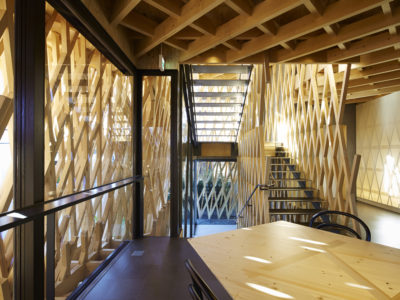
© Illona Marx
The spectacular outer shell was created by hand in an elaborate traditional manner from pieces of wood, each six centimetres long. Not a nail and not a drop of glue was used. Even the screws that you see are purely decorative. Inside, warm light creates atmosphere, the scent of the wood soothes the senses. A piece of the delicious, buttery pineapple cake and an Oolong tea to go with it – and you can enjoy a 360° experience of this architectural masterpiece.
By the way: Besides the Tokyo Sunny Hills branch, Kengo Kuma has designed not only the nearby Nezu Museum. He is also responsible for the new Olympic Stadium, which will receive a lot of attention next year when the postponed Games take place.
3 Chome-10-20 Minami-Aoyama, Minato-ku, Tokyo




